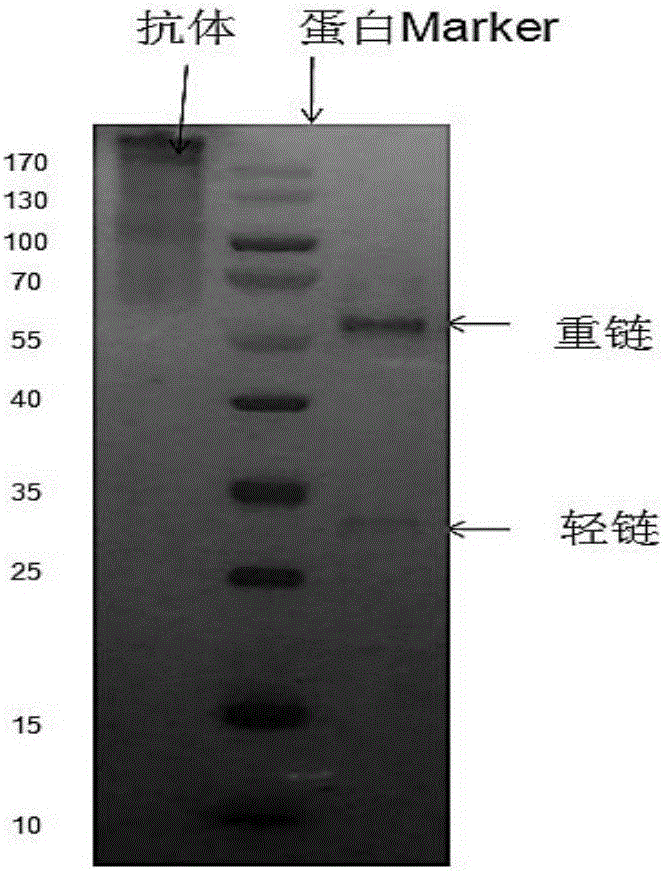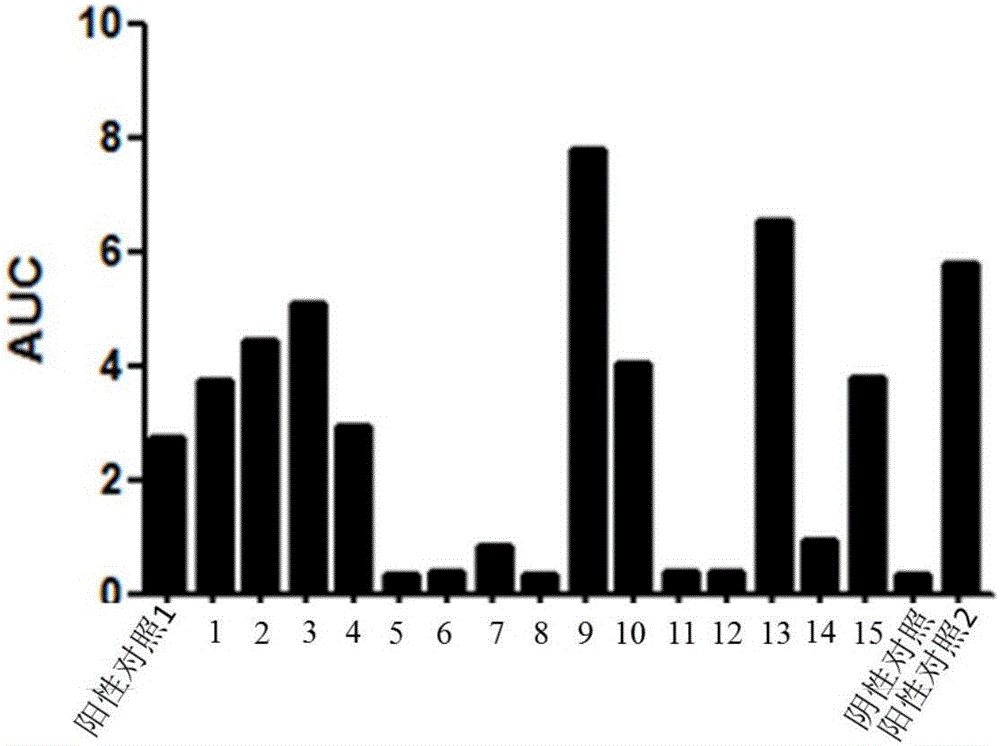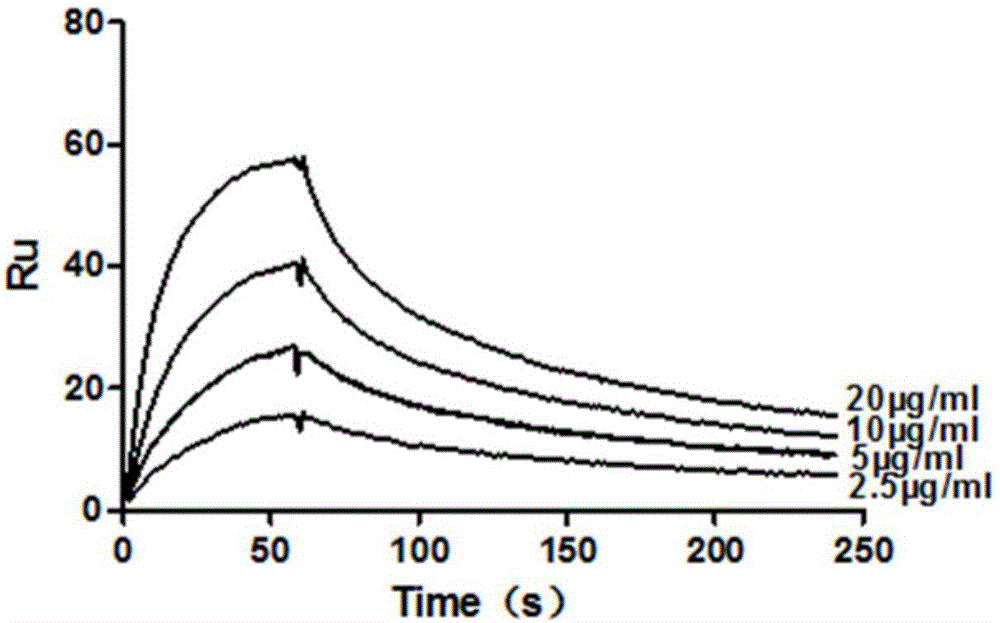Complement factor H inhibitor and application related to same
A technology of complement-related diseases and inhibitors, applied in the fields of application, antibody, genetic engineering, etc., can solve the problems of low affinity, not yet fully activated B lymphocytes, low concentration of antibodies, etc.
- Summary
- Abstract
- Description
- Claims
- Application Information
AI Technical Summary
Problems solved by technology
Method used
Image
Examples
Embodiment 1
[0081] Example 1 PBMC isolation and single memory B cell sorting
[0082] Eleven patients expressing CFH autoantibodies were found by immunoblotting, and their peripheral blood mononuclear cells (PBMC) were pooled. Using the avidin-labeled CFH 15-mer polypeptide (SEQ ID NO:9) as bait, a single memory B cell was sorted from the pooled PBMC using a flow sorter: select P1 (lymphocyte gate) → P2 ( IgG+) → P3 (CD3- / CD14- / CD16- / CD20+ / CD27ALL). Select P1&P2&P3 gate (IgG+ / CD3- / CD14- / CD16- / CD20+ / CD27ALL), count cells (5000 cells / well), sort multiwell. CD3- / CD14- / CD16- / CD20+ / CD27ALL cell population was sorted by flow cytometry. To minimize false positives, Streptavidin Fluor647 and Brilliant Violet421 were labeled with Alexa. Each fluorophore was labeled with streptavidin on a separate aliquot which was then mixed together and interacted with the biotinylated antigenic peptide. Cells of both fluorophores showing elevated fluorescence were sorted into wells of a single 96-well plate....
Embodiment 2
[0083] Example 2 Single B cell RT-PCR isolation of antibody variable region genes
[0084] Synthesize the first strand of cDNA: Add 0.5 μM constant region primers of heavy and light chains of each subtype to a 96-well plate containing a single B cell, and Superscript III reverse transcriptase, and incubate at 37°C for 1 hour; proceed according to the following conditions PCR amplification: 95°C for 15 min; 95°C for 1 min, 55°C for 1 min, 72°C for 1 min, 30 cycles; 72°C for 10 min; 4°C for 5 min. The product cDNA was stored at -20°C.
[0085] Separation of antibody genes by Nest-PCR: Each single cell amplifies the heavy chain and light chain sequences respectively. The 50 μL system contains 5 μL of RT reaction products, HotStarTaq enzyme, dNTPs, and 0.5 μM specific primers for heavy chain and light chain antibodies of each subtype. Reaction conditions: pre-denaturation at 95°C for 5 minutes, and then 35 PCR cycles: 95 ℃×30s, 55℃×60s, 72℃×90s, and finally extend at 72℃ for 7mi...
Embodiment 3
[0086] Example 3 PCR product clone identification and antibody expression
[0087] PCR product purification and clone identification: 2 μL of the amplified product was detected by 1.2% agarose gel electrophoresis, and the target fragment was about 400 bp. The gel electrophoresis was identified as positive, and the PCR product of the antibody variable region gene whose heavy chain and light chain could be paired was connected to the pcDNA3.3 vector (which has been transformed and contains the antibody leader and constant region) by the method of TA cloning, Transform the ligation product into DH5α-competent bacteria, culture on a plate containing ampicillin at 37°C overnight, then pick 10 single colonies and perform PCR with specific primers, reaction conditions: pre-denaturation at 94°C for 3 minutes, denaturation at 94°C for 30 seconds, Anneal at 55°C for 30s, extend at 72°C for 1min40s, 28 cycles, and finally extend at 72°C for 5min; take 5 μL of PCR product for electrophore...
PUM
 Login to View More
Login to View More Abstract
Description
Claims
Application Information
 Login to View More
Login to View More - R&D
- Intellectual Property
- Life Sciences
- Materials
- Tech Scout
- Unparalleled Data Quality
- Higher Quality Content
- 60% Fewer Hallucinations
Browse by: Latest US Patents, China's latest patents, Technical Efficacy Thesaurus, Application Domain, Technology Topic, Popular Technical Reports.
© 2025 PatSnap. All rights reserved.Legal|Privacy policy|Modern Slavery Act Transparency Statement|Sitemap|About US| Contact US: help@patsnap.com



